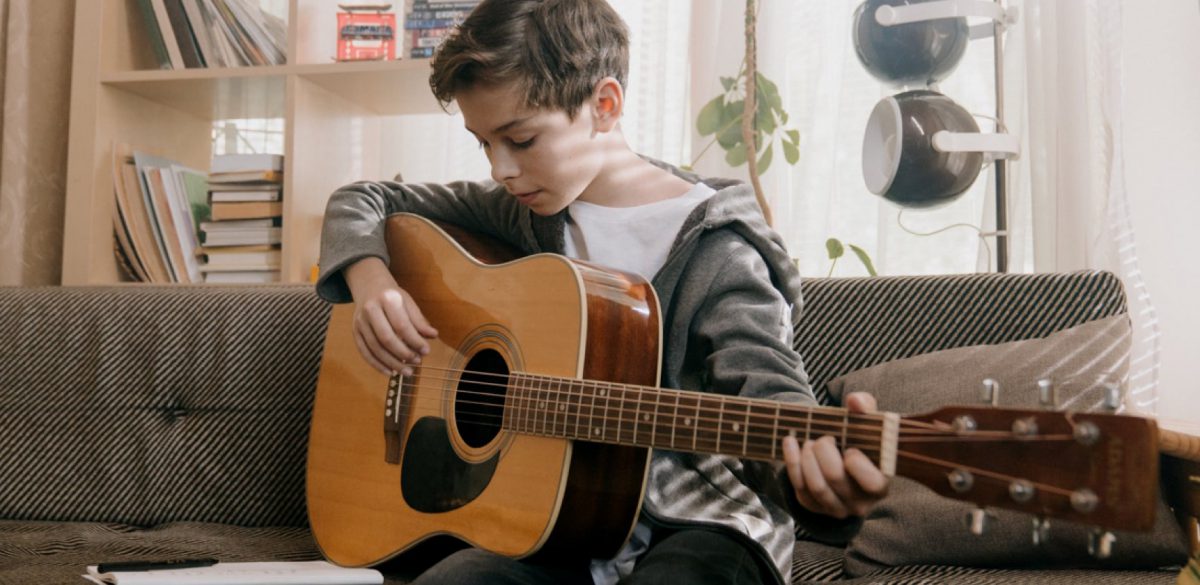
Amplifying Soundtrap for Amazing Music Making
December 4, 2017Teaching high school music technology is a balancing act between student engagement and teaching musical skills. It seems like an impossible task and I know that I have found myself compromising the educational philosophy that I feel so strongly about in order to keep students hooked. I was about to throw in the towel and accept the fact that music technology was always going to be a superficial overview of music making until I found the culprit that was keeping my students from reaching their potential as music producers: loops.
Loops are one of the first things that are taught in the majority of music technology classes. It makes sense, creating songs with loops allows students to have a very successful first experience in making music on a DAW while showing them the basics of how the program works. Students understand how to use tracks and clips to create songs that sound good which bolsters their confidence as musicians which will prepare them for the arduous journey of MIDI input and music theory ahead, right? Not really.
Using loops at the beginning of the music technology curriculum shows students that they can make music that sounds great without experiencing the rigor of actual composition. When they transition into more advanced topics after loops, some of them shut down and become difficult to manage. Of course there are a handful of students that see the challenge of music making as a way to an end. Most of those students have taken other music classes before and understand that the process will lead to a product. By showing students that they can create a product with little process makes it very difficult to talk about triad spellings and chord progressions.
We no longer teach loops at my school and students don’t enter the digital audio workstation (DAW) until the third week of class. The beginning of music tech class is now all out finger drumming. Students learn how drum beats work by playing them on their desks. The beauty about this is that EVERYONE IS AT A DISADVANTAGE. None of the students (unless there are some drummers in the class) sound good on the first day. They start by understanding that music making is a process that will result in a product.
I’ve created a five video series on finger drumming for my students to practice in and outside of class.
Students play along to these videos using a piece of paper with boxes labeled snare, hihat, and kick. They can’t hear if they sound good because the paper drum machines sound like paper. All they are thinking about is the concept! BWAHA! My stubborn educational philosophy about teaching independent musicianship instead of product can now live in music technology class. Once students have passed a few performance tests showing that they can read a beat map and play a few grooves, they can go to their workstations for the first time.
The first project students do on the computer is to record a live performance of a four measure drum beat with a metronome (FYI – I do not show them quantizing until later). Conversation between students during this project makes my music teacher heart grow a few sizes. Instead of, “Hey, check out how awesome this sounds!” on the first day when they have no idea what they are doing, students that have never had a music class before are saying, “Can you practice with me? I’m having a hard time keeping the eighth note subdivision consistent when I add in the back beat.”
The success that students feel after they have performed a four measure drum loop with good time is addicting to even the most nonacademic student. I would like to mention that the makeup of the music technology classes at my school is predominantly non-musicians who are at risk. There are students missing from my class every day for suspensions and alternate placements and the look on their faces when they have worked through a process to create something is unbelievable.
After four measure drum beats students learn: drum fills, half time feel, bass and kick relationships, chord progressions, bass line rules, triad spelling, triad inversions, melodic rhythm, melody writing using chord tones and non chord tones and song form. At the end of the semester students are able to play in every element of a song into a DAW with little editing. They can use virtual instrument to get the ideas that they have in their head out into the digital world.
Here are some tips that I’ve found helpful in teaching music tech as a skill based class.
- Never underestimate the power that easy has on students. If they find a way to make something easier for them that takes away the need for them to master a skill, they will use it.
- Have a clearly defined definition of mastery and constantly praise students for holding themselves up to a high standard. Our definition is “being able to do something as many times as you want, without having to think about it, and without making any mistakes.”
- Show students that you are fighting the same kinds of battles that they are with being able to play music. You might be way farther down the road, but it’s still the same path.
Why is Sountrap the best DAW to teach this way? Because of its collaborative nature and the flexibility it creates by being able to use different devices on the same project. Students can practice finger drumming on their phone. The Soundtrap app even changes the position and amount of drums when you rotate from landscape to portrait to make it easier to play with your thumbs! Instruments sound great and the synths can actually be edited. We used to teach with Garageband. Our school is 1:1 with iPads and it was very difficult to get projects from iPads to the computer and vice versa. Now it’s instant. I’ll never go back.
It’s an amazing time for music. The resources and technology that is available to students is astounding. Part of our jobs as music technology teachers is to show students how to use these resources to augment their experience as independent learners instead of step skipping and being obsessed with instant gratification. It is tough going at first, but well worth it!
Most of the supporting materials in this blog post and some lessons for this method are hosted on the music technology section of a free music education website www.shedthemusic.com. Feel free to steal/change any of the stuff you find on there. Our goal is to make it the best resource available and if you see anything that you would want edited, removed, or added let us know by emailing us or by using the Q&A contact form. Follow The Shed on social media to get the latest updates on our resources.
 EDU Portal
EDU Portal


